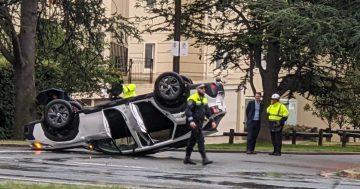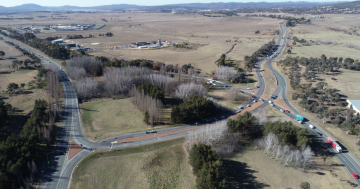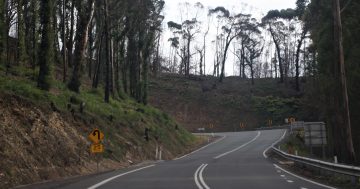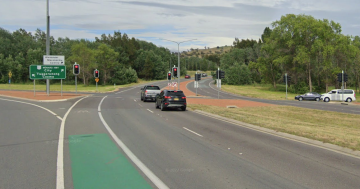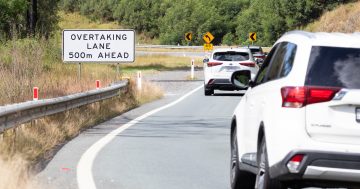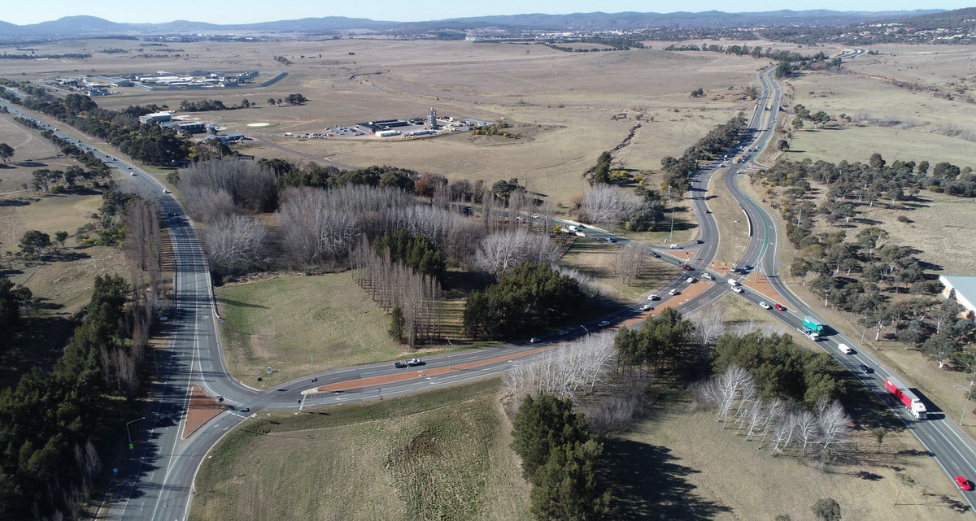
Looks almost peaceful from the air. Not so on the ground. Photo: ACT Government.
The Monaro Highway near Hume has again been named the most dangerous road in Canberra, according to insurance claim data from AAMI.
The stretch of treacherous dual-carriageway tarmac was beaten to the infamous number-one position on 2022’s ‘Crash Index’ by Canberra Avenue in Fyshwick but has returned to take the dubious honour in 2023.
Canberra Avenue is close behind in second place, followed by Gundaroo Drive in Gungahlin and Drakeford Drive in Kambah, while fifth place was a tie between the Monaro Highway again, albeit closer to Fyshwick, and Newcastle Street, also in Fyshwick.
“It seems Fyshwick is still a hotspot no matter the road,” the index reads.
The insurance company doesn’t include data on the exact number of claims but said it analysed more than 340,000 accident claims across the country to “expose common crash statistics and the most dangerous roads in each capital city and territory”.
Nose-to-tail prangs were the most common type of collision in the ACT, making up one in four claims.
This was also common to all other states and territories, except for Hobart and the Northern Territory, “where accidental damage while parked and collisions with an animal were the leading type of crash”.
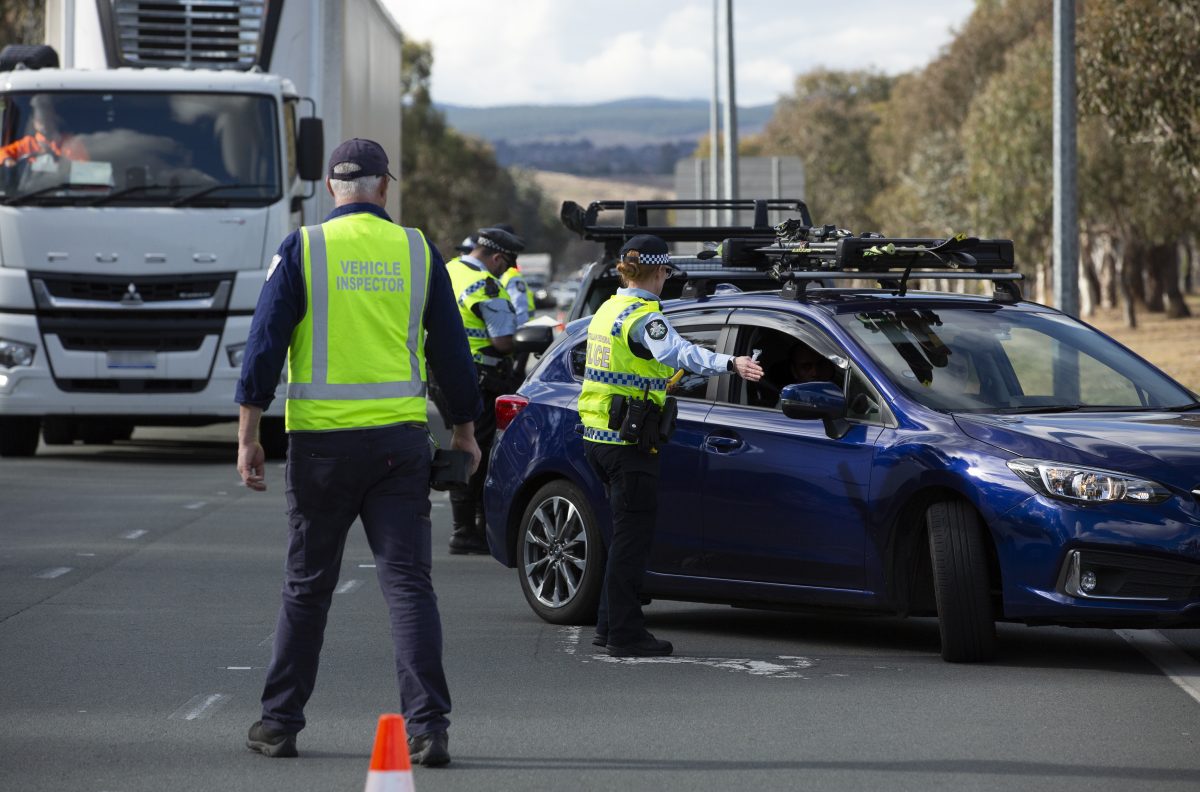
ACT Policing in action on the Monaro Highway. Photo: ACT Policing.
In the ACT and nationally, Fridays were the worst day of the week for accidents (16 per cent), while afternoons proved the most common time. Almost one-third of accidents occurred between 1 pm and 4:30 pm.
Male drivers (54 per cent) were more likely than females (46 per cent) to be involved in accidents, and the worst offenders were drivers aged 35-49 (24 per cent).
Kim Bessel is a driver trainer with Fifth Gear Motoring in Canberra and says the data comes as no surprise.
“They’re all arterial roads, they’re all as busy as heck in the mornings and afternoons, and so it’s highly likely you’re going to have nose-to-tail accidents because people are rushing to work or home, not leaving enough space and racing through intersections.”
The worst in his experience is Canberra Avenue between Fyshwick and Queanbeyan, mainly for the sheer amount of traffic it has to hold.
“It’s 80 km/h, and then there are traffic lights that force everyone to come to a stop, as opposed to the Tuggeranong Parkway, for instance, where – although they’re travelling fast – everybody is flowing.”
For the same reason, he’s pleased to see the ACT Government finally ridding the Monaro Highway of its traffic lights and replacing the intersections at Lanyon Drive, Mugga Way, Tralee Street and Shepherd Street with high-speed flyovers.
“High speed is about getting volume moving, but when you bring it to a standstill all the time, that doesn’t really work.”

Accidents come down to distraction, according to driver trainer Kim Bessel. Photo: Michelle Kroll.
Kim also confirms traffic on a Friday afternoon to be “mad, especially on a long weekend”, to the point he’s told his fellow trainers to avoid running Learner-driver courses at that time.
“It comes down to distraction,” he says.
“That doesn’t necessarily mean everyone is on their phones. Distraction can be as simple as, ‘Thank God, the week’s over – I can relax’. Or, ‘I can’t wait to get to my mate’s place and finally have a cold beer’. But actually, you’re still driving.”
But it’s not all bad news.
“I see a lot of good behaviour on these roads as well – people trying to leave a gap, trying to maintain the speed limit, using their indicators. The salient message for each and every one of us is, ‘be aware of the vehicle that’s randomly going to do the wrong thing’ … because you are still in charge of your own one-tonne weapon.”












